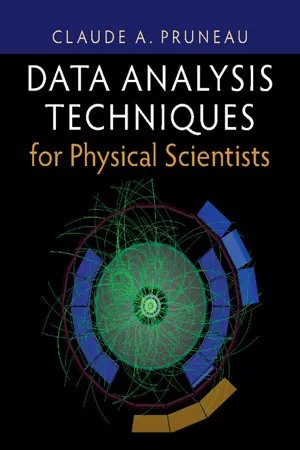
- English
- PDF
- Available on iOS & Android
Data Analysis Techniques for Physical Scientists
About this book
A comprehensive guide to data analysis techniques for physical scientists, providing a valuable resource for advanced undergraduate and graduate students, as well as seasoned researchers. The book begins with an extensive discussion of the foundational concepts and methods of probability and statistics under both the frequentist and Bayesian interpretations of probability. It next presents basic concepts and techniques used for measurements of particle production cross-sections, correlation functions, and particle identification. Much attention is devoted to notions of statistical and systematic errors, beginning with intuitive discussions and progressively introducing the more formal concepts of confidence intervals, credible range, and hypothesis testing. The book also includes an in-depth discussion of the methods used to unfold or correct data for instrumental effects associated with measurement and process noise as well as particle and event losses, before ending with a presentation of elementary Monte Carlo techniques.
Frequently asked questions
- Essential is ideal for learners and professionals who enjoy exploring a wide range of subjects. Access the Essential Library with 800,000+ trusted titles and best-sellers across business, personal growth, and the humanities. Includes unlimited reading time and Standard Read Aloud voice.
- Complete: Perfect for advanced learners and researchers needing full, unrestricted access. Unlock 1.4M+ books across hundreds of subjects, including academic and specialized titles. The Complete Plan also includes advanced features like Premium Read Aloud and Research Assistant.
Please note we cannot support devices running on iOS 13 and Android 7 or earlier. Learn more about using the app.
Information
Table of contents
- Cover
- Half title
- Title
- Copyright
- Dedication
- Contents
- Preface
- How to Read This Book
- 1 The Scientific Method
- Part I Foundation in Probability and Statistics
- Part II Measurement Techniques
- Part III Simulation Techniques
- References
- Index